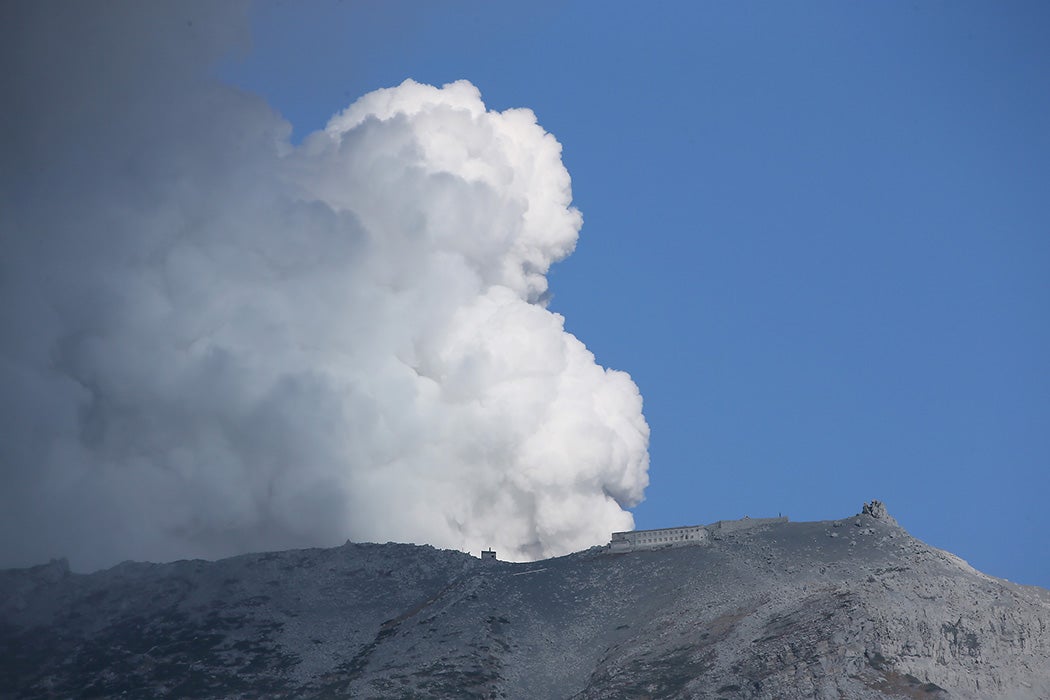Many of us have some idea about what happens during volcanic eruption. Lava flowing from shield volcanoes destroys everything in its path, albeit sometimes quite slowly. Composite volcanoes (stratovolcanoes) produce explosive eruptions with the potential to send ash clouds worldwide, coloring our sunsets and cooling our planet. Cinder cones (scoria cones), tend toward more modest eruptions and lava flows, but the behavior is recognizably volcanic to the general public.
Perhaps less familiar is the outcome of volcanic activity. What happens in the days, weeks, and years after a volcano “does its thing”? Researcher and cultural anthropologist Eric J. Cunningham investigated how a volcanic eruption impacts the ecology and life in the areas surrounding volcanoes, providing insight as to how society can plan for the aftermaths of future eruptions.
On September 27, 2014, the Ontake-san (Mount Ontake) volcano in the Kiso Valley of Japan erupted unexpectedly, launching the area into immediate chaos. The subsequent ash plume reached a height of more than four miles, with hot lava and pyroclastic flows rushing downward. Japan deployed emergency rescue teams to aid in the disaster. Tragically, more than fifty people died from the eruption, making it the worst volcanic disaster in Japan’s post-war history.
Ontake-san’s landscape, like many worldwide, had been—and continues to be—shaped by interactions between humans and the natural world. Livelihoods on the mountain were being eked out in tourism, industrial forestry, and the building of dams and other hydroelectric infrastructure. The volcano disrupted all of this.
Combining ecological and ethnographic research, Cunningham investigated how the community of Otaki, already economically fragile, responded to the eruption. “For residents of Otaki, a village located at the base of Ontake-san, this eruption has cast a shadow over an already precarious lifeworld,” he noted. “Like many other rural communities in Japan, the village is confronting the edges of its own existence.”
The topographically robust area around Otaki had directed the village toward tourism and small-scale farming. Already in debt at the times of the eruption thanks to an investment in skiing infrastructure, Otaki’s inhabitants were counting on tourism related to winter sports, limited as it might be, to get by. The eruption put this possibility in jeopardy.
Many farms were destroyed in the eruption, and the ski resort wasn’t able to open as early in the season as usual. The delayed opening and people’s hesitancy to return to the area for recreation left the entire tourism industry shaky.
Yet, Cunningham sought a silver lining in the situation, noting that “Ontake-san’s eruption may offer an interruption and destabilizing moment in which alternative projects might be imagined and brought into being. The affections that inform social and ecological relations, as well as forms of labor in the Ontake-san landscape provide ground from which these imaginaries may spring and be cultivated.”
Weekly Newsletter
In other words, in the wake of the catastrophe, Otaki was forced to adapt, forging new tourism partnerships and resource management strategies. The new jobs and partnerships could introduce longer-term sustainable tourism into the still-recovering ecosystem.
Concludes Cunningham, “The hope is that the future lifeworlds of Ontake-san will be more and more enlivened through values of abundance, sharing, care, and love, fostering ways of being that resist the commodification, alienation, and marginalization that have marked the precarious nature of livelihood and life in the Ontake-san landscape.”
Support JSTOR Daily! Join our new membership program on Patreon today.







